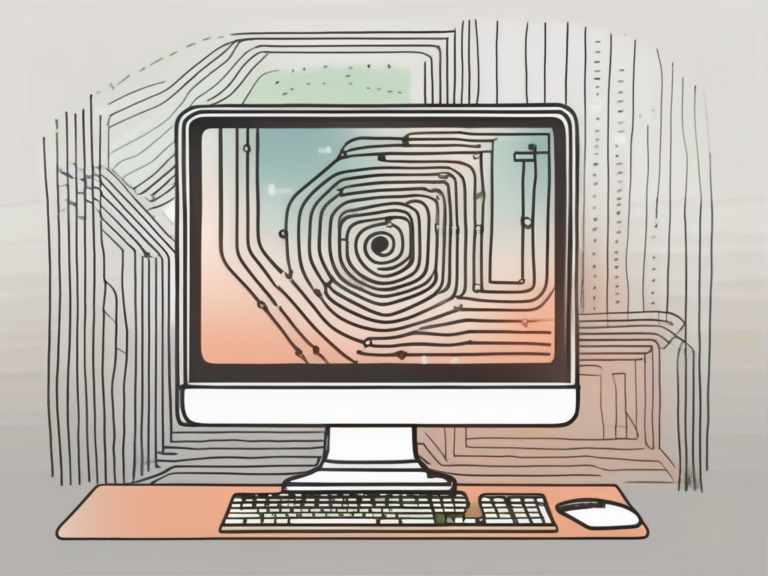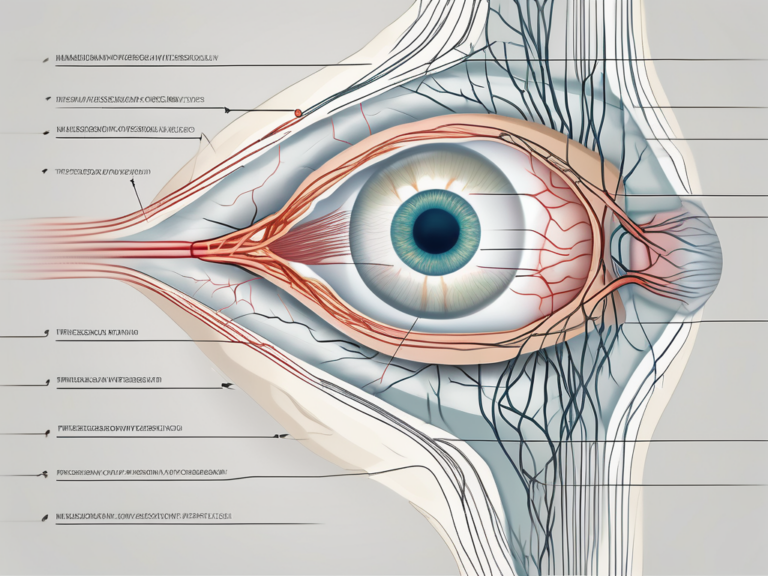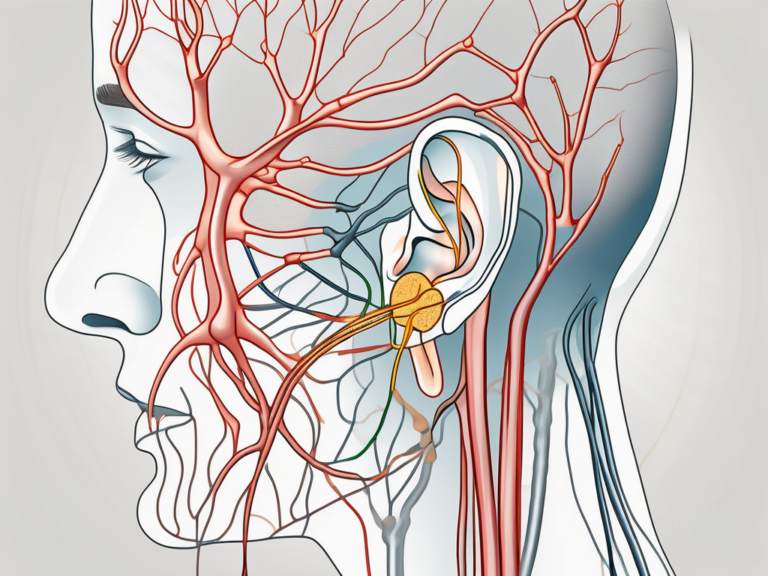What Is a Recursive Equation?
In the realm of mathematics, recursive equations are a fascinating concept that often find applications in various fields, including computer science and economics. This article aims to explore the intricacies of recursive equations, from their fundamental definition to their practical implications and limitations.
Understanding the Concept of Recursive Equations
The foundation of comprehending recursive equations lies in grasping their nature and purpose. Recursive equations, also known as recurrence relations, are mathematical equations that define a sequence of values based on previously computed terms within the sequence. Each term in the sequence is derived using a recursive rule that depends on one or more previous terms.
But what exactly does it mean for an equation to be recursive? Well, let’s break it down. The term “recursive” itself refers to the act of repeating or iterating a process. In the context of equations, this means that each term in the sequence is determined by applying a specific rule or formula to one or more preceding terms. This recursive nature allows us to generate an entire sequence of values, starting from an initial term or set of terms.
Definition of Recursive Equations
Formally speaking, a recursive equation can be defined as a relationship between one term and one or more preceding terms, allowing the calculation of subsequent terms in the sequence. The equation represents the current term in terms of one or more preceding terms, eventually leading to the complete generation of the desired sequence.
Let’s take a simple example to illustrate this concept. Consider the Fibonacci sequence, where each term is the sum of the two preceding terms: 0, 1, 1, 2, 3, 5, 8, 13, and so on. In this case, the recursive equation would be: F(n) = F(n-1) + F(n-2), where F(n) represents the nth term in the sequence.
The Importance of Recursive Equations in Mathematics
Recursive equations hold immense significance in mathematics. They provide a powerful tool for representing and understanding various phenomena that exhibit sequential behavior. Recursive equations allow mathematicians to study dynamic processes and model real-world scenarios accurately.
For instance, in computer science, recursive equations are widely used in algorithms and data structures. They help solve complex problems by breaking them down into smaller, more manageable subproblems. This divide-and-conquer approach allows for efficient and elegant solutions to a wide range of computational challenges.
Furthermore, recursive equations are fundamental in the field of calculus, where they are used to define and analyze functions, sequences, and series. They play a crucial role in understanding the behavior of functions and their limits, enabling mathematicians to make precise predictions and draw meaningful conclusions.
In summary, recursive equations are not merely abstract mathematical concepts. They are powerful tools that allow us to explore and understand the intricate patterns and relationships that exist in the world around us. By delving into the depths of recursive equations, we unlock a deeper understanding of the underlying structures and processes that shape our mathematical and scientific endeavors.
The Components of a Recursive Equation
A recursive equation comprises two essential components: the initial condition and the recursive rule. Combined, these components enable the generation of subsequent terms within the sequence.
Let’s delve deeper into these components to gain a better understanding of their significance in the realm of recursive equations.
The Initial Condition
The initial condition, also known as the base case, establishes the starting point of the recursive sequence. It defines the value(s) of the first term(s) in the sequence and is critical for initiating the recursive process.
Think of the initial condition as the seed from which the entire sequence grows. Without a well-defined starting point, the recursive equation would be lost in a sea of ambiguity. By setting the initial condition, we provide a solid foundation upon which the subsequent terms can be built.
The Recursive Rule
The recursive rule specifies the relationship between each term in the sequence and the preceding term(s). It outlines the calculation or operation needed to compute the next term in the sequence based on the previous term(s).
Imagine the recursive rule as the guiding principle that governs the evolution of the sequence. It acts as a set of instructions, dictating how each term is derived from its predecessors. This rule ensures that each term is intricately connected to the ones that came before it, forming a cohesive and interdependent sequence.
It is worth noting that the recursive rule can take various forms, depending on the nature of the sequence. It may involve simple arithmetic operations, such as addition or multiplication, or it could encompass more complex mathematical functions. Regardless of its complexity, the recursive rule is the driving force behind the growth and evolution of the sequence.
Different Types of Recursive Equations
Recursive equations come in various forms, each with its own characteristics and behaviors. Linear and non-linear recursive equations are two prominent types that arise frequently in mathematical applications.
Linear recursive equations are those in which the relationship between terms is a linear function. In other words, the recursive rule can be expressed as a simple equation involving the preceding terms. This type of equation is particularly useful when modeling situations that involve constant rates of change. For example, consider a population growth model where each year the population increases by a fixed amount. The recursive equation for this scenario would be linear, as the change in population can be directly calculated based on the previous year’s population.
Non-linear recursive equations, on the other hand, encompass a broader spectrum of relationships between terms. The recursive rule in non-linear equations involves non-linear functions, which can lead to sequences that exhibit exponential or other non-linear growth patterns. These equations are often encountered in situations where the rate of change is not constant. For instance, in a financial model that takes into account compound interest, the recursive equation would be non-linear due to the exponential growth of the investment over time.
Understanding the distinction between linear and non-linear recursive equations is crucial in various fields, including mathematics, physics, computer science, and economics. By recognizing the type of equation at hand, researchers and practitioners can apply appropriate mathematical techniques to analyze and solve problems effectively. Moreover, the study of recursive equations provides a foundation for exploring more complex mathematical concepts, such as difference equations and dynamical systems.
Solving Recursive Equations
Solving recursive equations involves finding an explicit formula or closed-form solution that directly computes any term in the sequence without relying on previous terms. While explicit formulas provide a straightforward approach, they may not always be attainable for complex recursive equations. In such cases, iterative methods or approximations might be employed.
When tackling a recursive equation, it is helpful to follow a step-by-step guide to ensure a systematic approach. Let’s delve into the process of solving recursive equations:
Step-by-step Guide to Solving Recursive Equations
1. Identify the initial condition: Determine the starting value(s) for the sequence. This is crucial as it sets the foundation for the entire sequence.
2. Determine the recursive rule: Identify the relationship between each term and the preceding term(s). This rule dictates how each term is derived from the previous ones.
3. Apply the recursive rule: Use the recursive rule to compute subsequent terms based on the preceding terms. This step is where the magic happens, as each term builds upon the ones that came before it.
4. Continue the process: Repeat step 3 until the desired number of terms is obtained or until reaching a termination condition. This iterative process allows us to expand the sequence and uncover its hidden patterns.
5. Validate the solution: Check the resulting sequence to ensure it aligns with the expected pattern or behavior. This step is crucial for verifying the accuracy of our solution and confirming that we haven’t made any errors along the way.
While armed with this step-by-step guide, it’s important to be aware of common mistakes that can hinder our progress when solving recursive equations:
Common Mistakes to Avoid When Solving Recursive Equations
1. Incorrectly identifying the initial condition: Failing to accurately determine the starting value(s) can lead us astray from the correct solution. It’s crucial to carefully analyze the problem and establish the correct initial condition.
2. Misinterpreting the recursive rule: Understanding the relationship between each term and the preceding term(s) is paramount. Misinterpreting or misapplying the recursive rule can lead to erroneous results.
3. Overlooking termination conditions: Recursive equations may have termination conditions that signal when the sequence should stop expanding. Neglecting these conditions can result in an infinite loop or an incomplete solution.
By being mindful of these potential pitfalls and following a systematic approach, we can successfully navigate the intricate world of solving recursive equations. Remember, practice and perseverance are key to mastering this fascinating mathematical concept.
Applications of Recursive Equations
The practical applications of recursive equations extend beyond the realm of mathematics into various fields, illustrating their wide-ranging impact.
But let’s dive deeper into some specific areas where recursive equations find extensive use.
Recursive Equations in Computer Science
In computer science, recursive equations find a home in the hearts of programmers and developers. Recursive algorithms, which heavily rely on recurrence relations, offer efficient solutions to problems involving repetitive tasks and data structures. By breaking down complex problems into smaller, more manageable subproblems, recursion enables elegant and concise code implementations, often resulting in improved performance.
For example, in graph theory, recursive equations are used to traverse and search for paths in a graph. The recursive nature of these algorithms allows for efficient exploration of the graph’s nodes, making them invaluable in solving problems such as finding the shortest path between two points or detecting cycles within a graph.
Recursive Equations in Economics
Recursive equations play a crucial role in economic models, shaping the way economists understand and analyze dynamic economic systems. These equations provide a framework for capturing the interdependencies and feedback loops that exist within these systems, where future states or variables depend on past conditions.
By utilizing recursive models, economists can make predictions about economic trends, study economic growth, and evaluate policy implications. For instance, recursive equations are used to model the relationship between investment and economic output, allowing economists to analyze the long-term effects of different investment strategies on a country’s overall economic performance.
Moreover, recursive equations are also employed in studying consumer behavior and market dynamics. By incorporating recursive models into economic analysis, economists can better understand how individual decisions and market forces interact to shape the overall behavior of markets and economies.
As we can see, recursive equations have found their way into various fields, proving to be powerful tools for solving complex problems and understanding dynamic systems. Whether it’s in computer science or economics, the applications of recursive equations continue to push the boundaries of knowledge and innovation.
The Relationship Between Recursive Equations and Iterative Processes
Recursive equations and iterative processes are closely linked concepts, each influencing and complementing the other.
Understanding Iteration in Recursive Equations
Iteration refers to the process of repeatedly applying a rule or procedure multiple times to achieve a desired outcome. In the context of recursive equations, iteration entails using the recursive rule to successively generate terms in the sequence until reaching a termination condition.
Let’s consider an example to illustrate the concept of iteration in recursive equations. Imagine we have a recursive equation that defines the Fibonacci sequence, where each term is the sum of the two preceding terms. To generate the Fibonacci sequence, we start with the initial terms, 0 and 1, and then apply the recursive rule to generate subsequent terms. We continue this process until we reach a termination condition, such as a specified number of terms or a maximum value.
The Role of Recursion in Iterative Processes
Recursion provides a powerful mechanism for implementing iterative processes. It allows algorithms to break down complex problems into smaller and more manageable subproblems, ultimately leading to a desired solution. Recursion often facilitates elegant and concise code, reducing the cognitive burden for programmers.
Consider a scenario where we need to calculate the factorial of a number. The factorial of a non-negative integer n, denoted by n!, is the product of all positive integers less than or equal to n. To calculate the factorial, we can use a recursive function that calls itself with a smaller value of n until it reaches the base case of n = 0 or n = 1. This recursive approach allows us to break down the problem into simpler subproblems, making it easier to solve.
Furthermore, recursion can be particularly useful in solving problems that exhibit a self-referential or hierarchical structure. For example, when traversing a tree data structure, recursion allows us to visit each node and its children in a systematic and efficient manner. By applying a recursive algorithm, we can explore the entire tree, performing operations at each node as needed.
Frequently Asked Questions About Recursive Equations
Here are some frequently asked questions related to recursive equations:
Can All Equations Be Written Recursively?
No, not all equations can be represented recursively. Some equations may not exhibit a clear sequential structure or may require alternate approaches for their representation.
What Are the Limitations of Recursive Equations?
Recursive equations can sometimes be challenging to solve precisely, and finding explicit formulas for complex recursive equations may not always be possible. Additionally, recursive equations may encounter issues with convergence, leading to unstable or diverging sequences if not properly addressed.
However, despite these limitations, the study of recursive equations opens up a fascinating world of mathematical exploration. The intricate interplay between the initial conditions, the recursive rule, and the resulting sequence can reveal surprising patterns and behaviors. Mathematicians have developed various techniques to tackle the challenges posed by recursive equations, such as generating functions, difference equations, and matrix representations.
Moreover, the applications of recursive equations extend far beyond the realm of mathematics. In computer science, recursive algorithms play a crucial role in solving complex problems by breaking them down into smaller, more manageable subproblems. Recursive equations are also widely used in physics, biology, and economics to model dynamic systems and phenomena, ranging from population growth to the behavior of financial markets.






